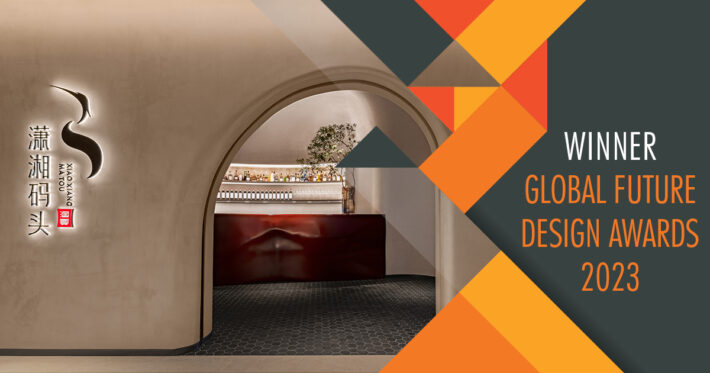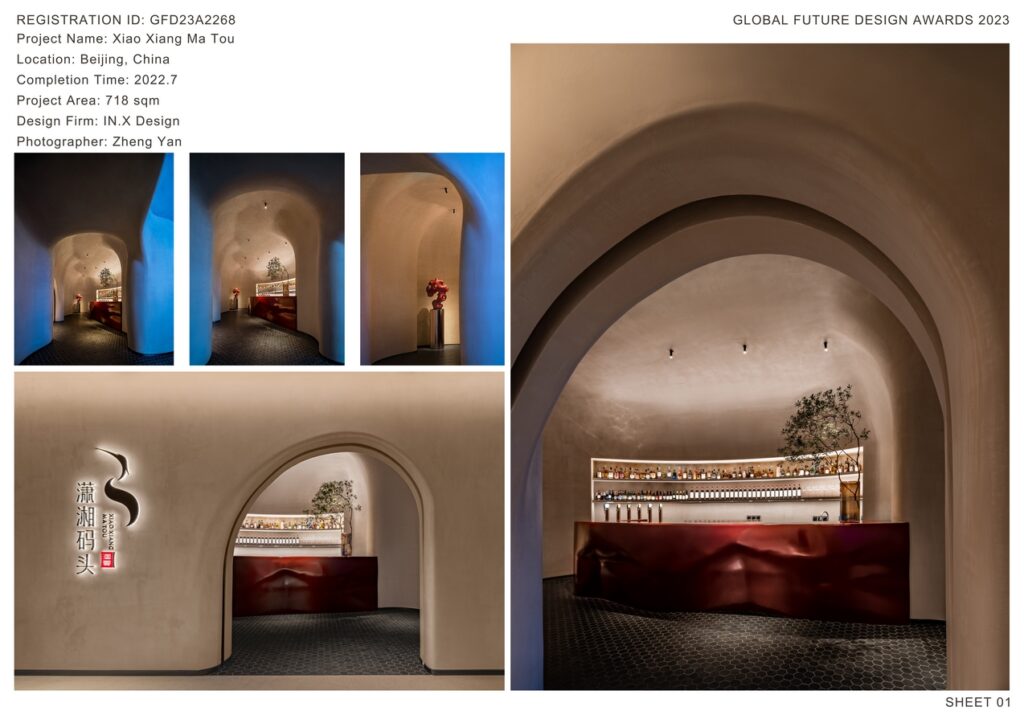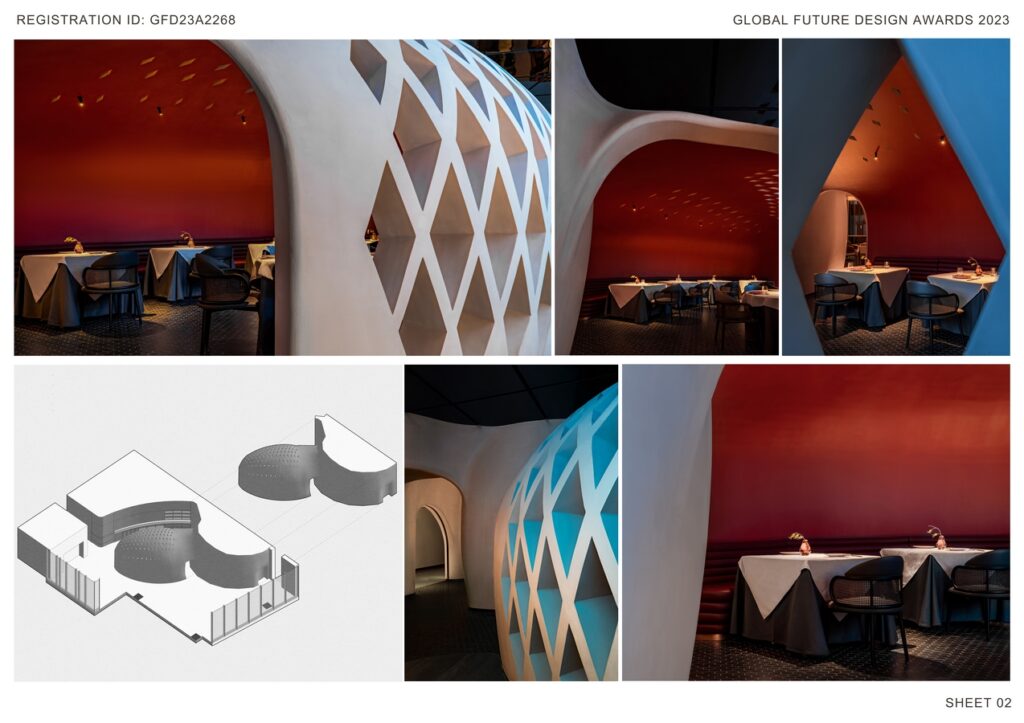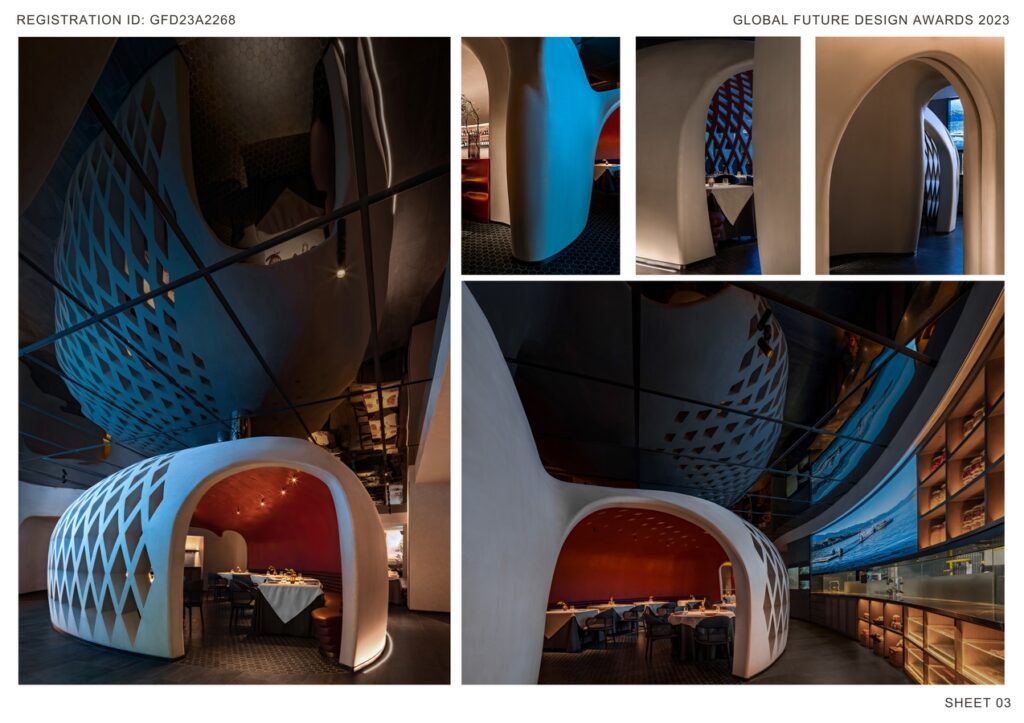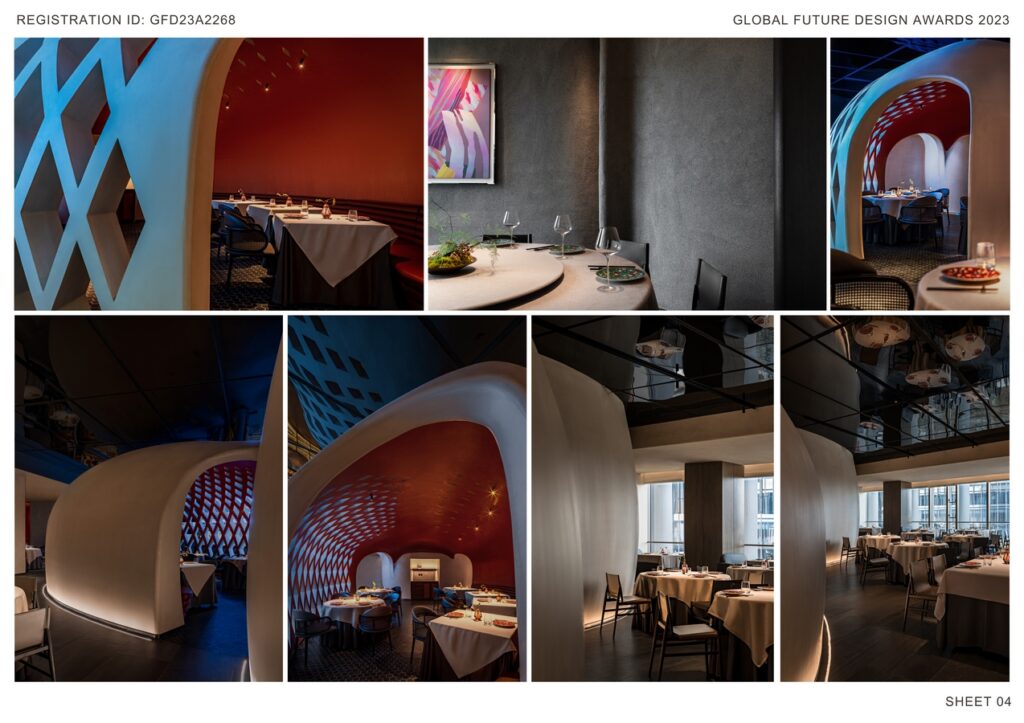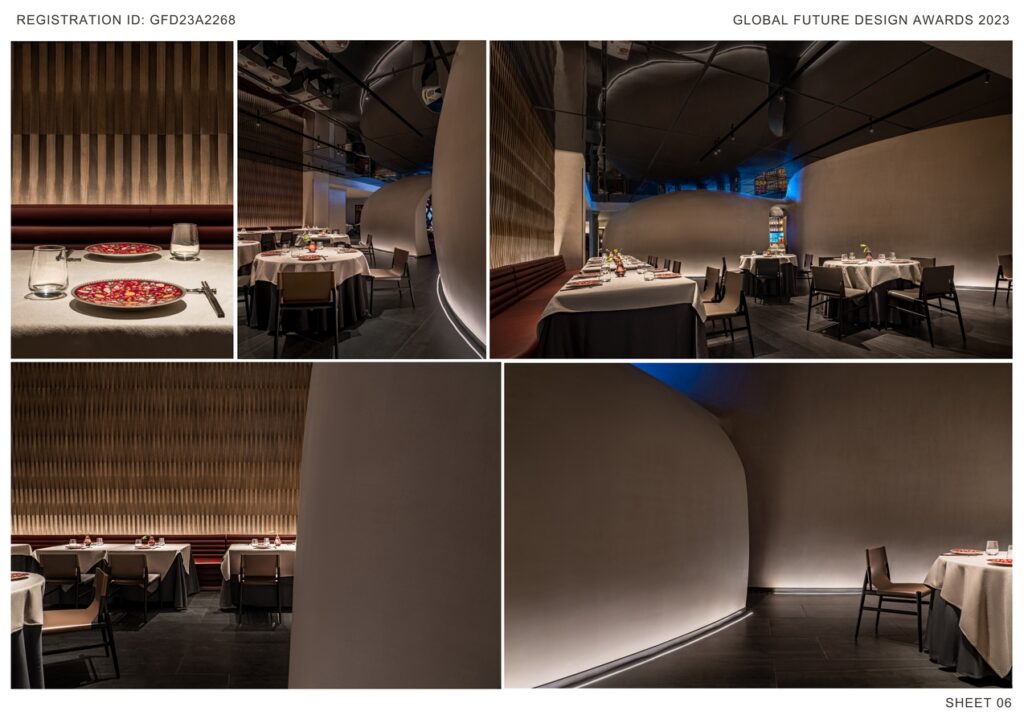In the commercial building of Lize Financial Business District of Beijing, a veteran Hunan cuisine chain, Xiao Xiang Ma Tou, opened its sixth restaurant-Fishing Feast in the capital of China, focusing on fish. Because of dedication to cuisine rather than storefront for many years, Xiao Xiang Ma Tou has remained in an obscure alley. This time, they entrust IN.X to refresh and upgrade its brand.
Global Future Design Awards 2024: Entries Open!
Take your work to the next level. Register Now…
Gold 🏆 Winner
Global Future Design Awards 2023
Xiao Xiang Ma Tou
Hospitality Interior (Built)
Firm
IN.X Design
Architect/Designer
Wu Wei
Design Team
Liu Chenyang, Jia Qifeng, Zhou Xin, Ying Zheguang, Song Jiangli
Project Location
Beijing, China
Country
China
Photographer/Copyright
©Photographer: Zheng Yan
Social Media Handles
Facebook: Not Available
YouTube: Not Available
Instagram: Not Available
Twitter: Not Available
Website URL
N/A
The designer hopes to fit Hunan cuisine culture to achieve localization of design and impress people with Xiao Xiang Ma Tou’s brand image, which is the strategy of overall spatial construction.
From designer Wu Wei’s perspective, a step backward, a step deeper and further, helps him to feel the connection among brand, nature and culture. Dating back over 7000 years, times of Gaomiao, traditional bamboo weaving emerged. The crafts had recorded life on land of Sanxiang for centuries, and people’s clothing, eating, and sheltering was bound by the light bamboo strips, forming “Hunan affection” in their prior memories .
Basing on the analysis of environment and functions of restaurants in the whole building, the designer draws inspiration from bamboo weaving, combines bamboo crafts with modern dining space and makes two large white “cavities” in the main space through deconstruction and enlargement. This pair of soft constructions inside the hard space not only reinforce a sense of being contemporary, but also accomplish the genetic impression of branding by its natural appearance and cultural orientation.
Limited by difficulty and cost of construction, it has been unachievable to build the “cavities” with 3D technology. Instead, with traditional steel structure and concurrent calibration of shaping, surface curving and details, this experimental project has been accomplished by cooperation of many people, getting the project extremely close to the original design.
Bamboo strips, once on a single human being’s fingertips, transform into the giant construction of steel and cement. The hard and heavy modern materials have been placed subtly. Though Time flies, hustle and bustle, stays forever,together with craftsmanship.
In the relatively compact inner part, “cavity” divides the space into two, creating the interior; also as the sculpture and visual focus in the open area, it is the efficient solution to the dual issues of both space and vision.
On a larger scale, the dining zone is put in contemporary air by soft curves in plain-colored flat; triangle wooden panel patchwork forms “weaving” visual effect, echoing the hollow surface of “cavity”.
Hustle and bustle comes from handling of materials. The combination of shuishashi which was used widely in the 1970s and 80s and modern weishuini adds hierarchy to the space.
The subtle change in granularity brings emotional transformation of being here—-modern smoothness mixed with coarse particles, like sand running across our skins of emotion, warm sense of time and hustle and bustle coming together as one, triggering attachment.
The red color is purely and distinctly rendered and embellished in the form of large surfaces or artworks, stirring up a festive, energetic and spicy palate in the art gallery-like gray and white layers, until the people’s sight comes to the shallow plate of hibiscus. A spatial dance from the virtual to the real, old and new, ends mildly – diners are seated, the food is being cooked, the aroma is wafting , and the appetites are being good.
The aim of this project is to impress customers with space shaping and then form brand.
The designer succeeds in changing the previous obscure image of brand and embedding it in people’s mind, by creating strongly eye-catching principal part in the space. What’s more, he digs the connection among brand gene and urban culture and nature, pursuing to root deeper and make brand grow and nutritiously memorable.


